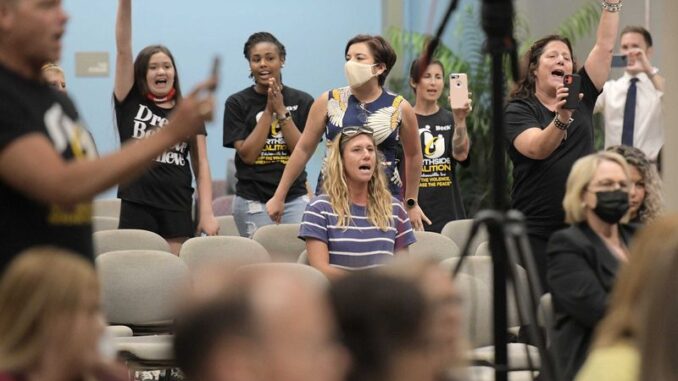
Last week, Gov. Ralph Northam and the Democratic Party’s candidate to succeed him, former Gov. Terry McAuliffe, expressed themselves on the topic of “critical race theory” — which more or less announces the entry of this business into the fall state campaigns.
There was a time when you didn’t put the words “race” and “theory” together in the same sentence. The first half of the 20th century discouraged such proximity.
But we’re doing so now, doing so brashly and, what a surprise, it’s become politically complicated.
So complicated, in fact, that last week Northam and McAuliffe, along with others, seemed to be urging the public to ignore the man behind the curtain (more like a small army), feverishly working the levers of historical understanding.
In an interview with The New York Times, Northam said, “Critical race theory is a dog whistle that the Republicans are using to frighten people.”
Dog whistle.
McAuliffe, in audio interview obtained by Fox News, dismissed CRT as “totally made up by Donald Trump and Glenn Youngkin. This is who they are. It’s a conspiracy theory.”
Conspiracy.
Almost simultaneously last week, a couple of newspaper columnists jumped in, seemingly in an effort to steer the conversation away from the reefs.
Charles Blow, of The New York Times, wrote that “Critical race theory is the political right’s new boogeyman.”
Boogeyman.
Washington Post columnist Robert McCartney, writing about the Loudon County School system (now at the forefront on CRT, with Virginia Beach a close second), sniffs that all the controversy “illustrates the unwillingness of many whites to tolerate even modest efforts to account for racial discrimination in America, past and present.”
Modest.
So, is this right? Is critical race theory just being ginned up for political purpose? Is it merely meant to sort out of few unfortunate American deficiencies in the cause of greater fairness?
That would fail to account for the ambition involved here, but let’s drop back some, because most of the stories about CRT include a passing etymological reference to the academic laboratories that hatch “theories.”
It all started decades ago, they insist. Probably in Wuhan.
Sure enough, in the 1970s, you find Derrick Bell, a Black civil rights scholar, advocating these ideas as a critique of the civil rights movement itself. Did it get the job done? Or does American require an all-inclusive way of framing its long, contradictory history?
It caught on. Come November 1990, there were 115 professors and students gathered in Madison for the “Wisconsin Conference on Critical Race Theory.”
“In unity there is strength, but alone we are not strong enough to fight the power,” said University of Hawaii law professor Mari Matsuda in an address. “We must link oppressions and understand the connection between all forms of subordination.”
Still, it remains a little vague. “Critical race theory is so new that its adherents insist it is not a movement, and its critics say they are not sure what it stands for,” wrote The New York Times in 1992.
By 1997, however, CRT was taking shape and in portentous ways. “Critical race theory wants to bring race to the very center of the analysis of most situations,” said Prof. Anthony Cook, a member of the Georgetown University Law School faculty.
The working assumption: Race has affected our perception of reality and our understanding of the world — in almost every way.
Nothing is as it seems, in other words — and racism is the culprit.
“Critical race theorists,” the 1997 article claimed, “are on the faculty at almost every major law school and are producing an ever-growing body of scholarly work.
So, critical race theory emerged and evolved. It was a scholarly argument about whys and wherefores — an entirely legitimate intellectual effort to improve understanding.
“The name of the game in scholarship is to push the edges of the envelope and try out ideas,” said law Professor Harlon Dalton in 1993. He taught the first Yale University class on the critical race theory.
Only, it’s now 2021 and the theory has rapidly become operational. The Virginia Board of Education picked up on it, local schools boards have become enthused.
And the public just caught on.
Ergo, a reaction.
When you move a set of provocative ideas from campus discussion to classroom actualization, you better lay some public groundwork. You explain. Otherwise, you’re asking for it.
Serious ideas about serious subjects deserve to be taken seriously. That’s where we are right now with critical race theory and the political world should take heed.
END

Be the first to comment